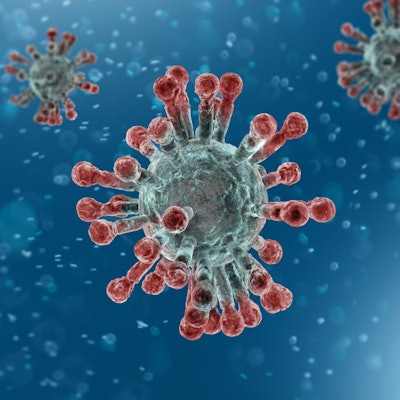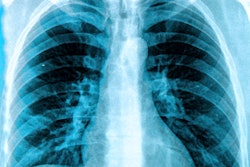
Radiologists from Singapore are offering their peers strategies learned from the 2003 outbreak of severe acute respiratory syndrome (SARS) that can be used to deal with the COVID-19 pandemic. Their suggestions were published April 3 in the Journal of the American College of Radiology.
"Harnessing our experience and lessons from the SARS outbreak in Singapore in 2003, [we] would like to share operational guidelines and strategies implemented in our practice to reduce the risk of COVID-19 transmission," wrote a group led by Dr. Yonggeng Goh of Singapore's National University Hospital.
As COVID-19 spreads, the demand for chest imaging is rising -- as is the potential for radiology staff to contract the virus, the authors noted. That's why it's so important for departments to put stringent infection control measures into place, Goh and colleagues wrote.
Goh's group outlined the following strategies for infection control in the radiology department:
Ensure adequate portable imaging capability, staff availability, and personal protective equipment.
- As demand for portable chest x-ray systems increases, allocate some of radiology's portable devices to the emergency department.
- Set up outdoor staging areas with portable imaging devices to triage patients.
- Dedicate a CT scanner for patients with COVID-19 symptoms.
- Mitigate staff demand surges caused by increased workload by freezing conference leave and vacation.
- Maintain a three- to six-month stockpile of personal protective equipment (PPE). Distribute PPE to staff at particular sites on the hospital campus.
Establish strict infection control practices.
- Maintain PPE guidelines: All staff must wear surgical masks when on clinical duty, use double gloves, and cover gown cuffs.
- Postpone nonurgent CT or MRI scan appointments.
- Navigate CT patients with two separate radiographers: The first is in direct contact with the patient (with full PPE); the second operates the scanner.
- Regularly assess hand hygiene standards, monitor staff temperatures, and clean equipment with 70% isopropyl alcohol after the scan is complete. Air the scan room for at least 30 minutes before scanning the next patient.
- At the end of the day, wipe down the machine, walls, and floor with a diluted bleach solution. Deep clean portable x-ray machines twice daily.
Maintain social distancing among staff.
- Split staff who are at high risk into two groups, one of which works one week while the other is either rotated to a lower-risk duty or self-quarantined at home. (Most symptoms of the disease appear within the first six days, the authors noted.)
- Ensure that staff only work at one facility rather than rotating between hospitals.
- Establish high-risk and low-risk infection areas within the department.
- Allow radiologists to make use of teleradiology.
- Limit face-to-face staff/student interactions by using video conferencing instead.
Goh and colleagues acknowledge that these strategies "may not be directly applicable to all institutions." But they can be tailored as needed.
"[We] believe the underlying principles and rationale of implemented strategies remain relevant and can be adopted or modified by other institutions for their practice in dealing with the current COVID-19 outbreak," the team concluded.





















